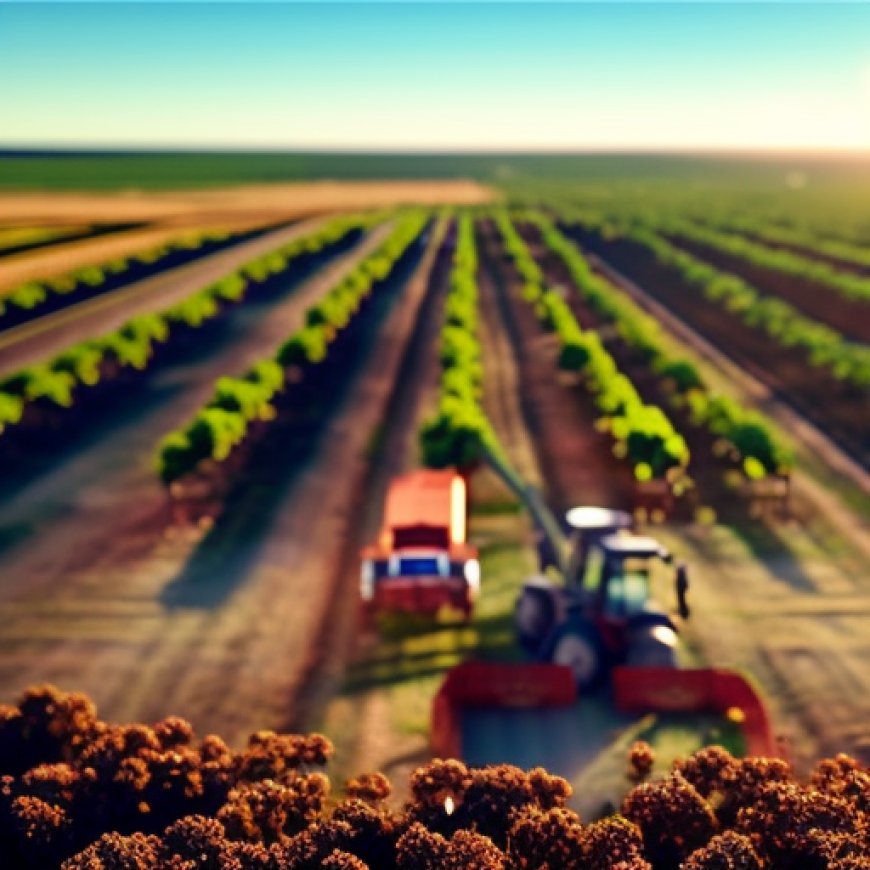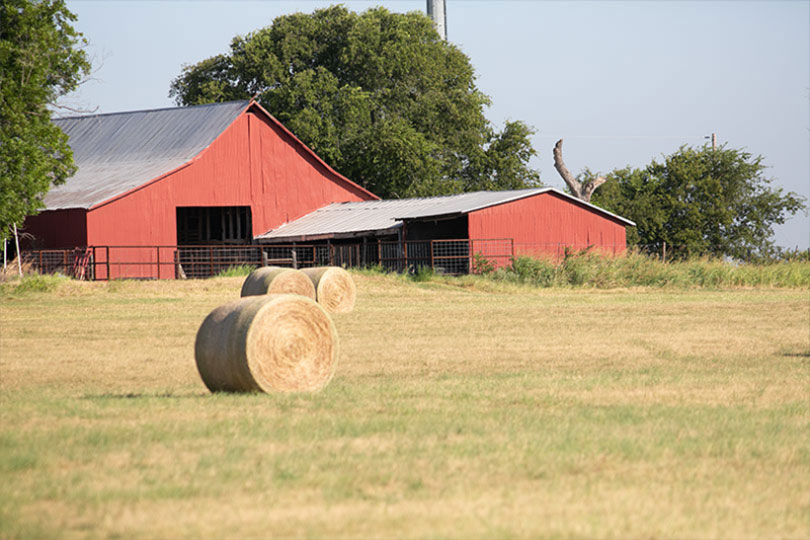Report shows agricultural land value up from last year – Texas Farm Bureau
Report shows agricultural land value up from last year Texas Farm Bureau


U.S. Agricultural Land Values and Cropland Rents Reach New Highs

The U.S. Department of Agriculture’s (USDA) Land Values 2023 Summary report reveals that U.S. agricultural land values and cropland cash rents have reached new highs.
Agricultural Land Values
Agricultural land values have increased by 7.4% per acre over 2022. The average value of U.S. farm real estate, which includes the value of all land and buildings on farms, is now $4,080 per acre, up from $3,800 last year.
Last year, farm real estate values increased by 12% from 2021, making 2023 the year with the largest increase since 2014.
Government program incentives, such as the Conservation Reserve Program, have contributed to increased competition for active cropland and higher land prices.
Competing land-use interests, including urban and suburban sprawl, as well as increased investments in hard assets like land for a safer return on investment during a period of extended inflation, are also factors contributing to rising land values, according to economists from the American Farm Bureau Federation (AFBF).
Texas Land Values
In Texas, land values continue to climb. The average value of Texas farm real estate is now $2,900 per acre, up from $2,650 in 2022.
Cropland Values
The average value of cropland in the U.S. has also increased in 2023, reaching $5,460 per acre. This represents a year-over-year increase of $410 per acre, the third highest increase behind 2022 and 2013.
In Texas, the average value of cropland is $2,590 per acre, up 7% from $2,420 last year.
Pastureland Values
Pastureland values have seen a significant increase from the previous year. The average value of pastureland in Texas is now $2,200 per acre, reflecting a 7% increase. The average value of pastureland in the U.S. is $1,760 per acre, up 6.7%.
Cash Rents
The report shows that cash rents have also experienced a jump. Across cropland, irrigated and non-irrigated, and pastureland, cash rents have increased by 4.4% to 7.1%.
U.S. cropland rent values have reached a record high of $155 per acre, while irrigated cropland rents are now $237 per acre. Non-irrigated cropland rent has increased to $142 per acre.
Cash rent for pastureland has increased to $15 per acre.
Challenges for Farmers and Ranchers
The report highlights that leasing cropland has become less profitable due to increased pressures on open land for residential and energy development across the nation. The preference of office-based workers to work remotely has also contributed to the competition for rural properties that compete with agricultural land use. Additionally, periods of heightened commodity prices lead to higher leasing rates set by landowners.
Alongside high input costs, increased rent and land costs pose additional obstacles for farmers and ranchers. While landowners who own land have seen their equity increase, these increases can become an unbreachable barrier to entry for those just starting out or reliant on rented acres to make ends meet, according to AFBF economists.
The Land Values 2023 Summary report was compiled by USDA’s National Agricultural Statistics Service and emphasizes the need to address these challenges in order to achieve the Sustainable Development Goals (SDGs).
SDGs, Targets, and Indicators Analysis
1. Which SDGs are addressed or connected to the issues highlighted in the article?
- SDG 1: No Poverty – The article mentions that high land prices can create barriers to entry for farmers and ranchers, potentially contributing to poverty in the agricultural sector.
- SDG 2: Zero Hunger – The article discusses the impact of increased land prices on farmers, which could affect their ability to produce food and contribute to food insecurity.
- SDG 11: Sustainable Cities and Communities – The article mentions competing land-use interests, including urban and suburban sprawl, as a factor contributing to rising land values.
- SDG 15: Life on Land – The article highlights the increasing competition for active cropland, which may have implications for land conservation and sustainable land management.
2. What specific targets under those SDGs can be identified based on the article’s content?
- SDG 1.4: By 2030, ensure that all men and women, in particular, the poor and the vulnerable, have equal rights to economic resources, as well as access to basic services, ownership, and control over land and other forms of property – The article mentions that high land prices can create barriers to entry for farmers and ranchers, potentially limiting their access to economic resources.
- SDG 2.3: By 2030, double the agricultural productivity and incomes of small-scale food producers, in particular women, indigenous peoples, family farmers, pastoralists, and fishers, including through secure and equal access to land – The article discusses how increased land prices can affect farmers’ ability to make ends meet and potentially impact their incomes.
- SDG 11.3: By 2030, enhance inclusive and sustainable urbanization and capacity for participatory, integrated, and sustainable human settlement planning and management in all countries – The article mentions competing land-use interests, including urban and suburban sprawl, which may require better planning and management to ensure sustainable land use.
- SDG 15.1: By 2020, ensure the conservation, restoration, and sustainable use of terrestrial and inland freshwater ecosystems and their services, in particular, forests, wetlands, mountains, and drylands, in line with obligations under international agreements – The article highlights the increasing competition for active cropland, which may have implications for land conservation and sustainable land management.
3. Are there any indicators mentioned or implied in the article that can be used to measure progress towards the identified targets?
- The average value of U.S. farm real estate per acre can be used as an indicator to measure progress towards SDG 1.4, as it reflects the affordability and accessibility of land for farmers and ranchers.
- The impact of increased land prices on farmers’ incomes can be used as an indicator to measure progress towards SDG 2.3.
- The presence of effective land-use planning and management strategies to address competing land-use interests can be used as an indicator to measure progress towards SDG 11.3.
- The extent of land conservation and sustainable land management practices in the face of increasing competition for active cropland can be used as an indicator to measure progress towards SDG 15.1.
Table: SDGs, Targets, and Indicators
| SDGs | Targets | Indicators |
|---|---|---|
| SDG 1: No Poverty | 1.4: By 2030, ensure that all men and women, in particular, the poor and the vulnerable, have equal rights to economic resources, as well as access to basic services, ownership, and control over land and other forms of property | Average value of U.S. farm real estate per acre |
| SDG 2: Zero Hunger | 2.3: By 2030, double the agricultural productivity and incomes of small-scale food producers, in particular women, indigenous peoples, family farmers, pastoralists, and fishers, including through secure and equal access to land | Impact of increased land prices on farmers’ incomes |
| SDG 11: Sustainable Cities and Communities | 11.3: By 2030, enhance inclusive and sustainable urbanization and capacity for participatory, integrated, and sustainable human settlement planning and management in all countries | Presence of effective land-use planning and management strategies to address competing land-use interests |
| SDG 15: Life on Land | 15.1: By 2020, ensure the conservation, restoration, and sustainable use of terrestrial and inland freshwater ecosystems and their services, in particular forests, wetlands, mountains, and drylands, in line with obligations under international agreements | Extent of land conservation and sustainable land management practices in the face of increasing competition for active cropland |
Behold! This splendid article springs forth from the wellspring of knowledge, shaped by a wondrous proprietary AI technology that delved into a vast ocean of data, illuminating the path towards the Sustainable Development Goals. Remember that all rights are reserved by SDG Investors LLC, empowering us to champion progress together.
Source: texasfarmbureau.org

Join us, as fellow seekers of change, on a transformative journey at https://sdgtalks.ai/welcome, where you can become a member and actively contribute to shaping a brighter future.







